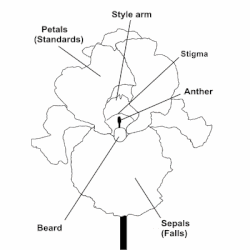Iris flowers
It's the big exotically seeming flower, which made the iris popular and admired. Not for nothing it is named after the Greek messenger of the gods, who bruited her messages travelling on a rainbow.
In order to understand irises better and to categorize them in groups by reference to their flower, on this site you can have a look at the most important components of an iris flower. If you try to comprehend those components by taking a real iris flower from your garden, the first breeding might be a lot easier to accomplish.
Because the predominant feature of an iris is its flower, iris enthusiast and breeders graduate it into flower categories. There is a specific designation for every color combination. Some designations hark back to characteristic wild species (e.g. Iris variegata or Iris amoena) others were generated in the course of breeding history.

The Amoena
White standards and falls in an arbitrary color constitute an amoena.
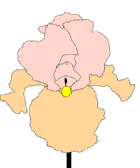
The Bitone
An iris with flowers in a color, that appears in two different hues on standards and falls is called bitone.
A blue bitone is especially called neglecta.
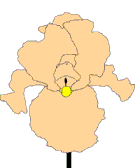
The Self
A monochrome iris is called self.
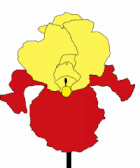
The Variegata
If an iris has yellow standards and petals in hues from red to brown it is called variegata.
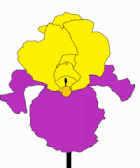
The Bicolore
A bicolore pairs two different colors in one flower.
